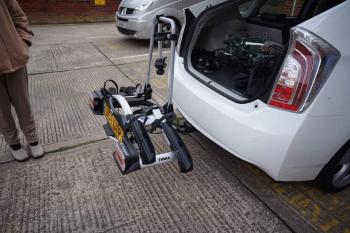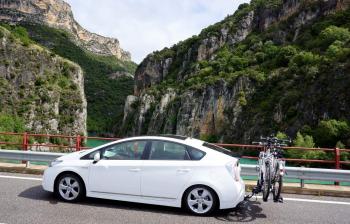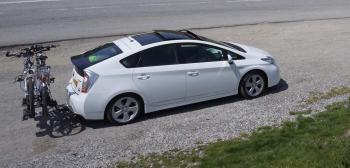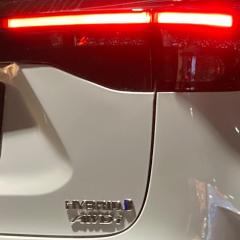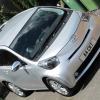Leaderboard
Popular Content
Showing content with the highest reputation on 11/14/2013 in all areas
-
3 points
-
Hi to all, Well I bought a Rav4 diesel five door because I spent the better part of ywelve years working on Landrovers. Doug.2 points
-
I was led to believe it's a kind of black hole, Geoff from Hull accidentally went in there many years ago seeking advice on his 1974 Toyota Crown and hasn't been seen or heard of since…..2 points
-
" Are you a science teacher ;-) " Oh dear, does it show ? :bookworm: Was my first career . . . C.2 points
-
" Is the life determined by hours the bulb is burning, number of power-cycles (i.e. switch ons and offs) or days since manufacture or even a combination of the preceding? Does vibration cause any life shortening and is this more critical with the brighter options? " Main cause of a filament lamp failing is the filament slowly evaporating, and therefore thinning, to the point where it is so thin somewhere along its length that it snaps. This will be aggravated by vibration. As the tungsten filament evaporates into the vacuum around it, it condenses back to metallic tungsten on the coolest part of the lamp: the glass envelope. That's why old lamps often look blackened - tungsten is deposited on the inside of the glass. One of the advantages of halogen lamps (glass 'envelope' filled with iodine, or another halogen gas) is that when the tungsten filament evaporates, it combines with the iodine around it to form tungsten iodide. This has the unusual property of depositing itself not on a cooler surface, but on a hot one - the filament itself - where it promptly splits up again into iodine and tungsten. This deposits tungsten back on the filament again! Eventually the lamp fails simply because the tungsten is not dumped back on the filament uniformly, and somewhere eventually goes thin. End of lamp. A second advantage of tungsten halogen lamps is that the filament can be operated at a much higher temperature than standard tungsten lamps. This gives a whiter light and more output for a given power. If a standard filament lamp was pushed to this kind of temperature, its filament would evaporate in a very short timespan and the lamp would "blow". Brighter headlamp bulbs simply run at a higher temperature (whiter light), and therefore have a shorter service life (more filament evaporation), but, as others have said, the life of reputable makes (Philips, Osram...) is still very respectable, usually years. Switching filament lamps on and off frequently doesn't affect their life much (provided they are not driven by abnormally high voltage) - but see below. If you go shopping for domestic lamps these days, you seem to have the choice between all sorts of lamp: old 230v mains filament bulbs (disappearing), 230v CFLs (compact fluorescent lamps), LED lighting, and two types of halogen lamp - 12v and 230v. Why two types? Which to choose? A 50W halogen lamp produces a certain light output (more or less), irrespective of whether it's driven by 12v or 230v. But there is a difference. The 230v lamp doesn't need a transformer (it runs direct off the mains), but it does have a long and very thin filament (to cope with the 230v across it), and this leaves it prone to filament failure, by both evaporation and vibration. 230v lamps just shouldn't be bounced around! Low-voltage (12v) lamps do need a transformer, but have the great advantage of having a short, stubby filament. Which, you've guessed, is both rugged and able to survive evaporation better. For "rough service" (eg on a vehicle), they're ideal. In a domestic setting, 12v (reflector and bi-pin) halogen lamps will often soldier on for years and years, whereas their 230v cousins just won't. Lamp manufacturers and retailers don't publicise this over-much. The life of a filament lamp (halogen or otherwise) can be extended by using "soft start" technology. Modern electronic transformers (for 12v lamps) usually have this built in as standard. When switched on, the bulb comes on gently over the first couple of seconds (soft start), and not with the sudden surge of current that a cold, standard filament would otherwise receive, particularly from 230v. The best of these "electronic" transformers are also dimmable (by standard dimmers), and run almost cold. They also can cost less than a tenner. For vehicles, the normal 12v supply set-up has its own (unintended) "soft start" characteristic. When headlamps are suddenly switched on (or flashed) the voltage being output by the battery/alternator very temporarily drops (you may notice some other lamps dim slightly) for less than a second, until the alternator senses this and increases its output. This voltage drop is enough to give the headlights a "soft start", and extend their life. Doesn't happen with HIDs, I guess, which need all the start-up surge they can get... Physics lesson over. Chris2 points
-
From just under 20k, that's for a 2wd. Prices start from 22.500 here but as we know there are some very good deals around. The 'lounge' model which I imagine is our Invincible equivalent starts at around 30k which is dearer. Maybe it comes with a granite fireplace and solid oak flooring..2 points
-
Nice one, Paul. Can I have contact details for "my mate"? I really like those prices! :laughing:2 points
-
There is always a trade-off between lamp output and service life. The whiter (brighter, hotter) the filament burns, the shorter its life. Original (factory-fitted) lamps will be long-life - so they don't expire during the warranty period, thereby impressing customers - rather than high-performance. "Long life" lamps, including the old domestic tungsten ones, were usually designed to operate at 250-260v, and at 240v would "under run", and last yonks, and burn slightly yellow. On a tungsten lamp, if you reduce the voltage by 10%, the service life goes up by around 400%. Increase it by 10%, and it goes down to around half, IIRC. Plus 90, +110, 35m, 40m ? Mainly advertising hype. They're all good, and probably from the same factory (or not)! Chris2 points
-
If you aren't doing the job yerself the Mr T price for front discs/pads isn't bad. Mine needed doing at just after 20k miles from brand new (not long after I bought the car) but 40k miles since then they're still fine!!?! Already done double the originals then. Must be down to the higher precision skilled driving it gets now (aka the wife) Dave NB just changed the rear pads myself. Easy job!2 points
-
if anybody is in the market for carrying bikes on a tow bar fitting, i can't recommend this Thule (tooler!) system highly enough the bike are separated, strongly mounted, can be locked in position, together with the rack and the detachable tow bar.....and best of all, the whole lot drops down for easy boot access, plus being so well counterbalanced that it is no effort!! the detachable tow ball fully (expertly) fitted in my driveway was £250, and the top of the range rack was similar, but a lot cheaper ones are available we have just come back from Spain, with the bikes easily on and off the car every day1 point
-
Had another break down with my gen3 Prius. This time the car started misfiring, banging, knocking and generally misbehaving itself. Got it over to the dealers sharpish and turns out the EGR valve was shot. Not a warranty item I understand and a cool £425 to investigate and replace. This car is proving an expensive experiment for me (and Toyota too); On my THIRD steering motor (all replaced under warranty) Have HV battery ECU replaced (warranty) Had the inverter replaced (part goodwill from Toyota and part payment from me) And now the EGR valve (paid for in full by me) (new brake pump replaced under recall - not a cheap part with intensive labour costs) The car hasn't even hit 80,000 miles yet. This is poor. The gen3 Prius is not following the marvelous reliability record of the rock solid gen2. Bizarre that Toyota took a backwards step for reliability. Wonder if that's why they only offered a 60,000 mile warranty originally? The car has also been displaying symptoms of HV battery failure in that the charge is cycling very quickly and frequently drops to 2/8 bars with minimual ev use. Dealers say it tested fine, so we'll see, but with reports of gen3 HV battery failure between 80,000 and 120,000 miles on the Priuschat forum, I am a little concerned. Appreciate those who've never experienced a problem with down play my comments, but just because you haven't had a problem, doesn't mean others haven't.1 point
-
It would appear I would be better talking to MFS..........My Blessed Self......... Yeah, get yourself over to General discussions1 point
-
1 point
-
I hereby humbly request that this post be moved to the WANTED section as it seems to be a recruitment ad Looks like my smileys have gorn there Del1 point
-
Didn't think that Geoff from Hull was still a member on here.........He scrapped his 1974 Toyota Crown when he realised that getting spares from the General Discussion Forum was not the way to go :p I think he has subsequently curled his toes up :(1 point
-
1 point
-
Could Jolly-Friar buy one and do a write up about changing it to RHD with a spare on the back?1 point
-
If they last one long dark Scottish winter at a time, and let me see wee Tam going to school in his black anorak and trousers with nae high viz., consider them worth it.........1 point
-
Got the starter fitted for £40 straight after I paid £160 for it yesterday. If you go to Eurocarparts in person you don't qualify for the discount. If you book the part from the Eurocarparts website in advance and enter the discount code service30 you get 30% off. That's why I reserved and purchased the starter motor today with the 30% discount, cost me £112. I then returned the starter motor with yesterdays receipt and got the £160 I was made to pay yesterday refunded. £48 saving.1 point
-
1 point
-
The intermediate shaft joint is subject to fretting, and fretting corrosion products (rust) can often be seen around the joint. Applying grease to the splines is no bad thing - it excludes oxygen and minimises further corrosion. Usually graphited grease is used on close fitting splined joints. It's probably not the grease that's stopped the noise in this case but, more likely, the slackening and subsequent tightening of the clamp bolt in order to apply grease. Shaft retaining compound, previously mentioned also excludes oxygen as well as taking up clearance on the splines.1 point
-
Like many other contributors to this forum I was a Gen 2 and Gen 3 Prius owner. I can only say that the HUD in the Gen 3 was the little bit of magic that made it better than Gen 2. I have just taken delivery of an Excel hybrid sport touring and have to date completed only 170 miles so have yet to find any problems as such, but I agree with others the analoge instruments are a retrograde step and although I was aware of the lack of HUD in this model I only now realise what a boon it is to a more relaxed form of driving. Toyota marketing please take note.1 point
-
I have 1cd ftv d4d in my avensis verso 2001 and it is 260000 km,just changed clutch(Blue Print) and year ago on some 230 000 km changed timing belt and water pump(Toyota original).It is great engine but next will be chain driven.For better filtration of fuel I am using pre filter from old Mazda 2.0D.It helps because of pure quality Diesel.It is good for injectors to ad some Liqui Moly additive from time to time in tank.I had some problems with Toyota service Manager in Split-Croatia and I think he wanted me to change Garett turbo charger on 150 000 for some 3000 Euro,new and half price repaired.When I ask him for printed data from computer to check data of turbo charger he refused.Main importer in Zagreb-Croatia told me that Toyota dealer in Split is best in country and they will not do anything against them even if I inform Japan.This is truth and I am ready to testify on any court.After two more Toyota services I discovered that it was catalizator partly clogged.Took it of and have no problems with "Safe mode" after presure rise in turbo system.1 point
-
1 point
-
Worked out how to change the time myself thanks to all the numerous replies. Got a result on the starter motor too. Used the 30% discount code to order a new starter motor online using the click and collect service, cost £112. A couple of hours later I returned the starter motor with yesterdays receipt for £160, no problems. If anyones interested you have to type in service30 in the gift/promo box on the Eurocarparts checkout webpage, this deducts the 30% discount.1 point
-
I sometimes get an annoying noise in the left ear when driving, usually at speed, occasionally when improving the fuel economy by getting a slipstream from the vehicle in front. I just ask the wife to shut up. </joke> & hope she never sees this!1 point
-
Thanks for your input Konrad, I was hoping you might pop up as I have found your posts a wealth of information. My typical load carrying is myself and one passanger plus permanent boot tidy with a small socket set and screw driver set a couple of litres of assorted fluids plus waterproof coats and perhaps a kilo at most more of general bits and bobs. Approx 1/3 of time tools of weight 20kg. Now the general stuff all lived in the Carina e as well, the tool carrying not so much ( hence buying estate as no lip to lift stuff over). As for my regular routes and driving styles are very similar if not identical between the two cars. I live in a village outside Nottingham so typically my regular commutes involve 30mph limit built up area followed by single carriageway 60mph limit followed by dual carriageway 70mph limit then buit up area again all in a 12mile each way approx 5 miles of national speed limit then 7 miles of urban. I drive gently typically cruise at 50 something on the single and dual carriageway once out of village. Urban I just pootle about. I rarely exceed 3000rpm tytpically though often on way home when fully warmed up hold 2nd and 3rd up 4000 or 4500rpm in the belief that it isn't good to never extend the engine. Hills or gradient wise there are inclines (nothing that warrants a downchange) on the single carriageway road out of village but there is the other side of the slope later on so it probably evens out. Plug leads not changed, I had wondered but having spent on getting the car's servicing up to scratch I stoppped spending. I am pleased you have posted a link for the vacuum switch to the inlet ports as I had read that and got me wondering. Fuel is a variety of Jet (my village station), Shell, Murco, ocasional supermarket fills and very occasional BP. Regular unleaded from all. Thanks for the tip to push plug leads tighter. That I think covers everything asked. Maybe I am looking for something that isn't there which is a blow, but if that is the case at least there is nothing seriously wrong with the car so that is pleasing. That leaves as always a fault with the operator, fancy not checking the kerb weights of both cars DOH... Thanks to all again. Matt1 point
-
The hole in the centre of the wheel will be wrong too. The Mini wheels are 56.1mm diameter and the iQ wheels are only 54.1mm diameter. Not a huge difference but you should fill that gap with a spigot ring spacer to keep everything running true. Craig.1 point






